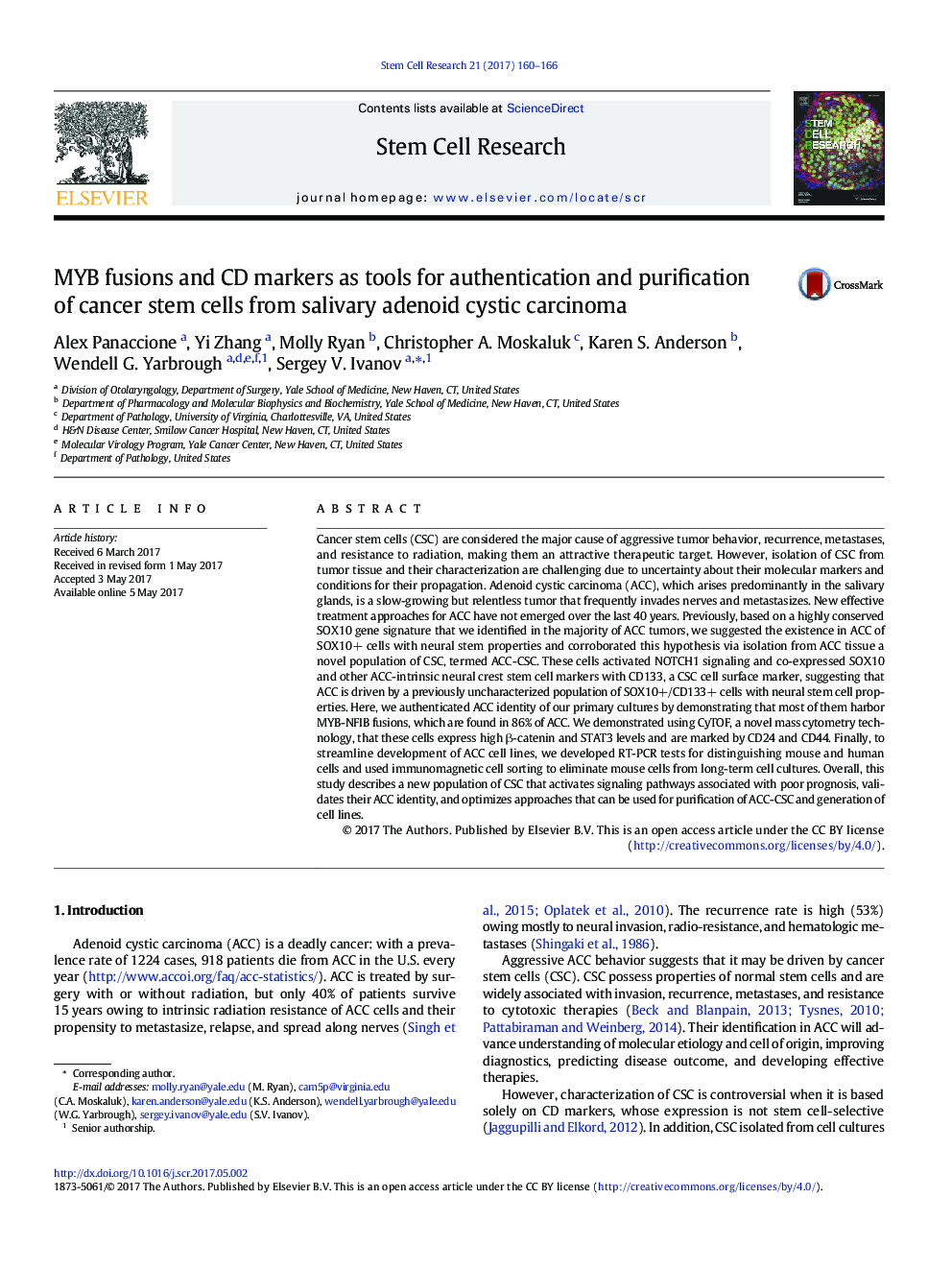| Article ID | Journal | Published Year | Pages | File Type |
|---|---|---|---|---|
| 5522657 | Stem Cell Research | 2017 | 7 Pages |
â¢ACC cancer stem cell cultures are authenticated using ACC-intrinsic MYB fusions.â¢A novel MYB fusion, with a long non-coding RNA from 6q23.4, is identified.â¢ACC-CSC is marked by expression of CD24 and CD44.â¢ACC-CSC purification is optimized to establish cell lines for drug screening.â¢CyTOF is used to explore STAT3 and β-catenin as novel targets for ACC-CSC eradication.
Cancer stem cells (CSC) are considered the major cause of aggressive tumor behavior, recurrence, metastases, and resistance to radiation, making them an attractive therapeutic target. However, isolation of CSC from tumor tissue and their characterization are challenging due to uncertainty about their molecular markers and conditions for their propagation. Adenoid cystic carcinoma (ACC), which arises predominantly in the salivary glands, is a slow-growing but relentless tumor that frequently invades nerves and metastasizes. New effective treatment approaches for ACC have not emerged over the last 40 years. Previously, based on a highly conserved SOX10 gene signature that we identified in the majority of ACC tumors, we suggested the existence in ACC of SOX10+ cells with neural stem properties and corroborated this hypothesis via isolation from ACC tissue a novel population of CSC, termed ACC-CSC. These cells activated NOTCH1 signaling and co-expressed SOX10 and other ACC-intrinsic neural crest stem cell markers with CD133, a CSC cell surface marker, suggesting that ACC is driven by a previously uncharacterized population of SOX10+/CD133+ cells with neural stem cell properties. Here, we authenticated ACC identity of our primary cultures by demonstrating that most of them harbor MYB-NFIB fusions, which are found in 86% of ACC. We demonstrated using CyTOF, a novel mass cytometry technology, that these cells express high β-catenin and STAT3 levels and are marked by CD24 and CD44. Finally, to streamline development of ACC cell lines, we developed RT-PCR tests for distinguishing mouse and human cells and used immunomagnetic cell sorting to eliminate mouse cells from long-term cell cultures. Overall, this study describes a new population of CSC that activates signaling pathways associated with poor prognosis, validates their ACC identity, and optimizes approaches that can be used for purification of ACC-CSC and generation of cell lines.
